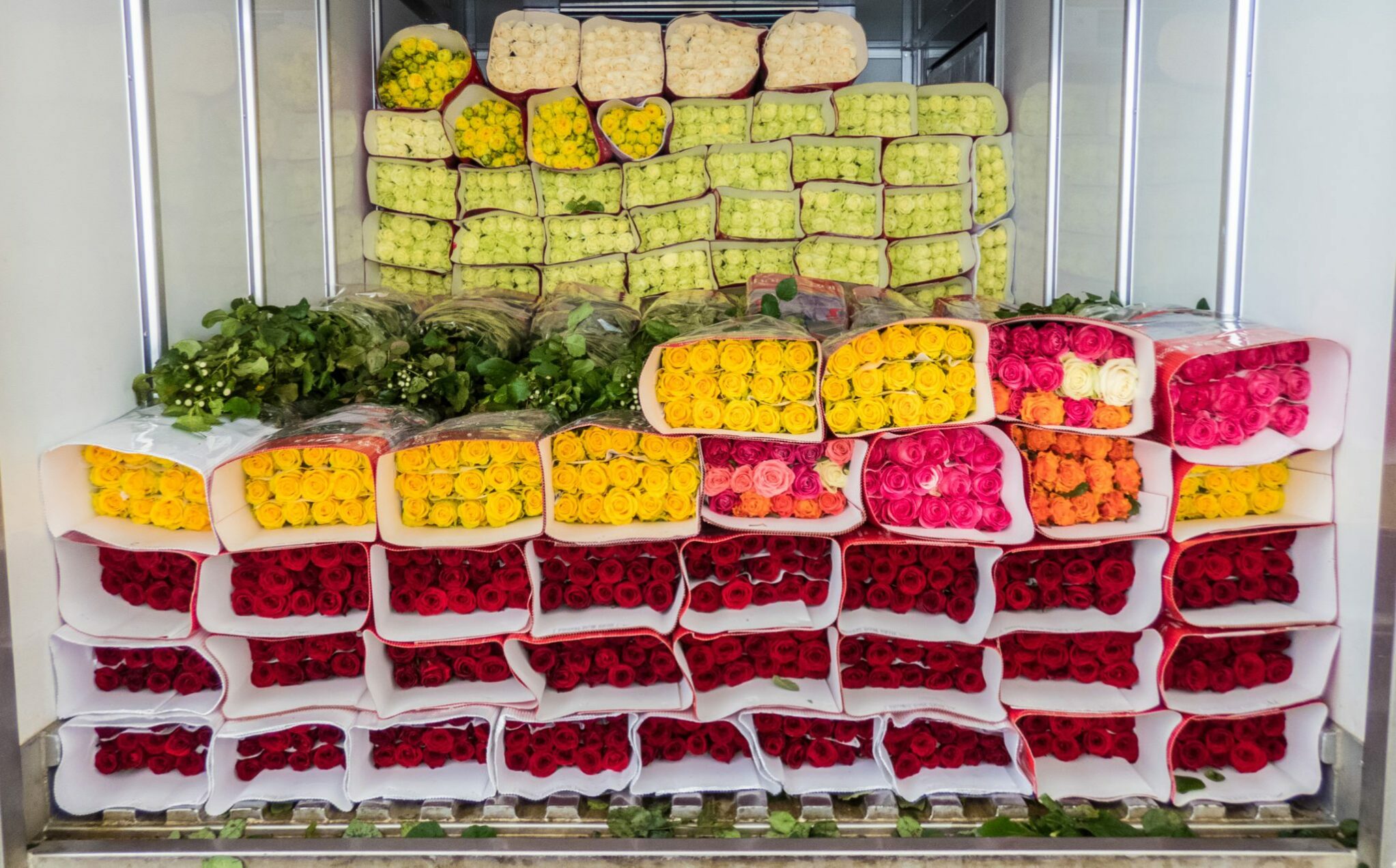
So many things have to go right for cut flowers to maintain their freshness on the journey from a flower farm to a consumer’s dining room table. One piece of the puzzle often taken for granted is packaging. The July/August issue of Floral Management wraps up what packaging can reveal about flower quality.
Of course, it is obvious if a box of flowers arrives looking damaged in any way.
Aside from such apparent damage, check that the box is perfectly flat on all sides. A convex box indicates the box was packed too loosely, which can cause broken branches and bruised petals. Bulging sides can indicate that the box has been packed too full.
All About Airflow
Here’s another thing to check when receiving a box of flowers: Are the air holes at either end of the box open? Are the flaps down? Are the air holes obstructed by flowers packed too densely?
Airflow within a shipping box is important to prevent pockets of warmth and excess humidity from developing in the box. When free moisture condenses into droplets, that condensation puts the flowers at risk of botrytis.
“The ideal is to have a uniform microclimate inside the box,” says Anil Ranwala, chief scientist at Floralife. Airflow is also necessary for effective pre-cooling, an essential step to prepare boxes for shipping.
Ventilation Plus
Good airflow depends not only on the air holes and the product density, but also on the flower sleeves. Generally, macro-perforated sleeves work better than micro-perforated sleeves, says Floralife director Steven Daum. The micro-perforated sleeves are manufactured by poking hot needles through plastic to make the holes. As the needles are withdrawn, the hot plastic can close over again, giving the impression of a tiny hole where there is none.
Controlling Ethylene
Another threat to flowers is ethylene, a gas flowers produce in greater volume if they are damaged or not very well chilled. Packaging can help protect flowers against ethylene, thanks to a variety of products that prevent the ethylene from latching onto the receptor sites on the flower. Anti-ethylene treatments can also be administered in other ways, including truck kits that release the treatment inside a transport vehicle.
Less Is More
It may seem like more packaging means better protection for flowers in transport, but in fact, overpackaging probably does more damage than under-packaging, says Daum. Why? The more packaging, the less airflow.
Daum points to the cardboard collar that rests at the top of a bunch of roses to hold them together. To perform its function, the collar only needs to be about three inches wide.
“A wider collar only slows the air flow and the air exchange inside the box,” says Daum. “It also increases the cost of the packaging, both in dollar terms and in terms of the environment.”
In general, the less packaging, the lower the cost and the smaller the carbon footprint. That said, any packaging that results in fresher flowers is well worth the cost. As Daum points out, “The greatest ecological savings is to be able to use every flower that’s shipped.”
For more tips on how to spot smart packaging in your flower shipments, visit the July/August issue of Floral Management.
Molly Olson is a contributing writer for the Society of American Florists.

